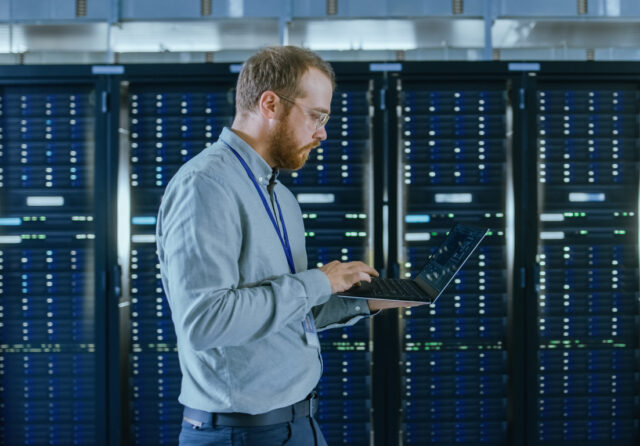Moore’s Law and the mantra of “faster, smaller, cheaper” has been around in the computing industry almost as long as computers themselves. In fact, today’s consumers have come to expect breakthrough innovation as part of the natural course of computing’s normal evolution. Megahertz become gigahertz, terabytes become petabytes, and we accept these achievements in stride while often missing the revolutionary changes that are driving that evolution.
The performance revolution began in earnest in 2016. That’s when next-generation processors stopped delivering incremental performance boosts of 10-15 percent and began delivering quantum leaps in performance of 2X and more. In 2021, the performance of Dell PowerEdge servers doubled again. And then again in 2022, setting new world records across hundreds of different benchmark tests. But it isn’t just processors that are driving PowerEdge’s incredible performance improvements. With the addition of DDR5, memory bandwidth doubled. With PCIe Gen5, throughput doubled. With PERC12, IOPS improved 6X.
The trouble with citing numbers is that they’re only numbers. They don’t tell the full story of the transformative technology taking place in data centers. For that, you need to visualize the difference. One of our customers, for example, is replacing 300 4U racks of previous-generation servers with 300 of our latest-generation 2U PowerEdge servers featuring AMD processors, which will free up floor space in their data center by half—all while handling a 10% increase in workloads, cutting latency in half, and saving millions on software licensing through fewer sockets. And that’s only half the story. The other half is what they can do with that extra floor space and capital, like investing it in artificial intelligence (AI) and machine learning (ML).
This is What Faster, Smaller, Cheaper Really Looks Like
CIOs don’t actually care about faster, smaller, cheaper servers. They’re concerned with how to incorporate AI into their data center and take advantage of new AI capabilities. They’re worried about rising licensing costs for their virtualized environments. They’re anxious to reduce power consumption and align with corporate sustainability goals. That’s where the latest PowerEdge servers with AMD technology really shine, because they not only feature a faster generation of processors, but they also feature better storage, memory, AI processing, security, power consumption and cooling.
Whatever workloads your business is running today, you can run them much more efficiently on new PowerEdge servers. For AI applications, the PowerEdge R7625 dual-socket 2U has set world-record performance benchmarks on AI/ML workloads thanks in part to technology that supports up to six additional GPUs per server. For data processing, the PowerEdge R7615 single-socket 2U server has achieved record-breaking benchmarks on database workloads while delivering up to 5:1 server consolidation over previous generation servers. For virtualized environments including virtual desktop infrastructure (VDI) applications, the PowerEdge R7615 server delivers 4X higher performance for virtualized servers while reducing software licensing costs as much as forty percent. For high-performance computing workloads, the PowerEdge R6625 dual-socket 1U server delivers up to 232% more performance per watt over previous generations. And for cloud hosting and telecommunications applications, the PowerEdge R6615 single-socket 1U server can reduce processor costs by as much as 48 percent while delivering 99.7 percent lower latency.
Yes, the latest PowerEdge servers have a much faster AMD engine — the EPYC processor — at their core. But these performance improvements aren’t simply the result of a better engine; they’re the result of better engineering across the entire server. Sixty percent more storage drives. 6X faster read/write times. Dell Smart Cooling technology that increases the server’s cooling capacity by 5X. More slots for GPUs. Everything about the new PowerEdge servers is designed to make everything you do a lot faster, a lot more efficient, and a lot more secure while using a lot less space and a lot fewer software licenses.
While the PowerEdge series deserves the spotlight, it’s important to remember the stars behind the scenes: Dell’s service professionals. They’ll help you optimize your PowerEdge server for whatever workload challenges you’re facing. That’s important because oftentimes the bottleneck isn’t your processor; it could be your storage connectivity, your I/O throughput or something else. Dell’s service professionals analyze your workload requirements and ensure that your PowerEdge servers deliver power where you need it most.
To learn more about the Dell PowerEdge family of servers featuring AMD technology, visit us online.


